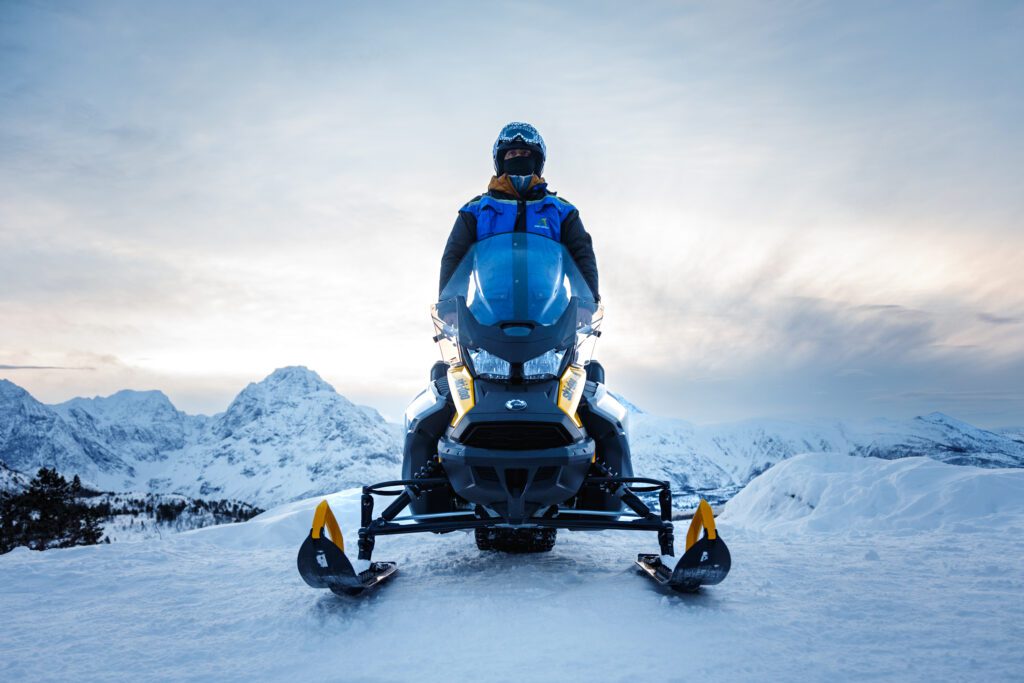Cover photo by Kristin Folsland Olsen
As you plan your Arctic surfing adventure, you’ll discover a range of surf spots along the stunning coastline. From the iconic beaches of Lofoten to the hidden gems in Senja, Andenes, Vesterålen, and Troms, there’s no shortage of places to surf.
The Arctic Route summer bus routes make it easy to explore some of these mentioned surf beaches, allowing you to hop from one break to another while taking in the spectacular scenery. Whether you’re a seasoned pro or a beginner looking to catch your first wave, Northern Norway’s surf scene has something for everyone.
Best surfing beaches in Northern Norway
Unstad beach
You’ll find one of the world’s best left-handed waves at Unstad Beach in Lofoten. This iconic spot attracts professionals during autumn and winter, while summer offers gentler waves perfect for beginners.
The deep sea off Unstad’s coast creates waves that might have started building up in Greenland, providing a unique surfing experience.
Flakstad beach

If you’re new to surfing, Flakstad Beach is an excellent alternative to Unstad. Located a little further west in Lofoten, it offers more manageable waves for beginners. Unstad Arctic Surf even provides transport to Flakstad, making it easy to access this beginner-friendly spot.
The Arctic Route summer bus route between Å I Lofoten and Svolvær drops you there daily between June and August.
Bleik beach

Bleik beach is considered by the locals as one of the longest and most spectacular beaches in Norway, with white sand and dunes. It’s perfect to spend a day sun bathing, swimming and surfing. It is also popular as a known spot for kiteboarding and surf, with its favorable wind conditions and consistent waves.
The Arctic Route summer bus route between Tromsø and Lofoten stops at Bleik beach daily between June and August.
Surfing conditions and seasons
Summer swells
You might be surprised to learn that the best time to surf in Norway is actually between September and March. However, if you’re planning a summer surfing adventure in Northern Norway, you’re in for a unique experience.
While the waves may not be as big as during the winter months, summer offers milder conditions that are perfect for beginners and longboarders. The North Atlantic swells still provide decent waves, especially in coastal areas.
Water temperature
When surfing in Northern Norway during summertime, you can expect sea temperatures to range from 10°C to 15°C (50°F to 59°F). While this might seem chilly, it’s quite manageable with the right wetsuit.
In places like Ervika, water temperatures can peak at 13°C to 17°C (55°F to 63°F) in early August. To stay comfortable, you’ll want to bring a 4/3mm wetsuit, and you might consider 3mm boots for longer sessions or on windy days.
Daylight hours
One of the most extraordinary aspects of surfing in Northern Norway during summer is the extended daylight hours. During the summer months of mid-May to mid-July, all destinations above the Arctic Circle (from Bodø up), enjoy 24 hours of daylight. This phenomenon, known as the Midnight Sun.
Essential gear for Arctic Surfing
To enjoy surfing in Northern Norway during summertime, you need specialized gear to handle the cold waters and unique conditions. Here’s what you should pack:
Wetsuits
You’ll need a thick, high-quality neoprene wetsuit designed for cold water. For summer surfing, a 4/3mm wetsuit is versatile and works well into fall and early spring. Look for suits with cozy linings from wrists to ankles for extra warmth.
Some top options include Rip Curl’s E7 neoprene suits and O’Neill’s Hyperfreak with TechnoButter 3X neoprene.
Boots and gloves
To protect your extremities from the biting cold, neoprene boots and gloves are crucial. These accessories provide insulation and grip, ensuring you can paddle and stand on your board comfortably. Remember, the ankle part of your wetsuit goes over the boots, while the sleeve goes over the gloves or mittens.
Boards
For Arctic surfing, you’ll want a board that can handle challenging conditions. Opt for shorter, wider boards with increased volume to provide more buoyancy and maneuverability in the waves. These types of boards will help you navigate the unique Arctic swells more effectively.
If you wish to add camping spots to your surf adventure in Northern Norway during summertime, check this blog article with more information about it.
Check also the Arctic Route summer bus routes to help you hoping on/off in between destinations within Lofoten or even all the way between Lofoten (Svolvær) and Tromsø.




